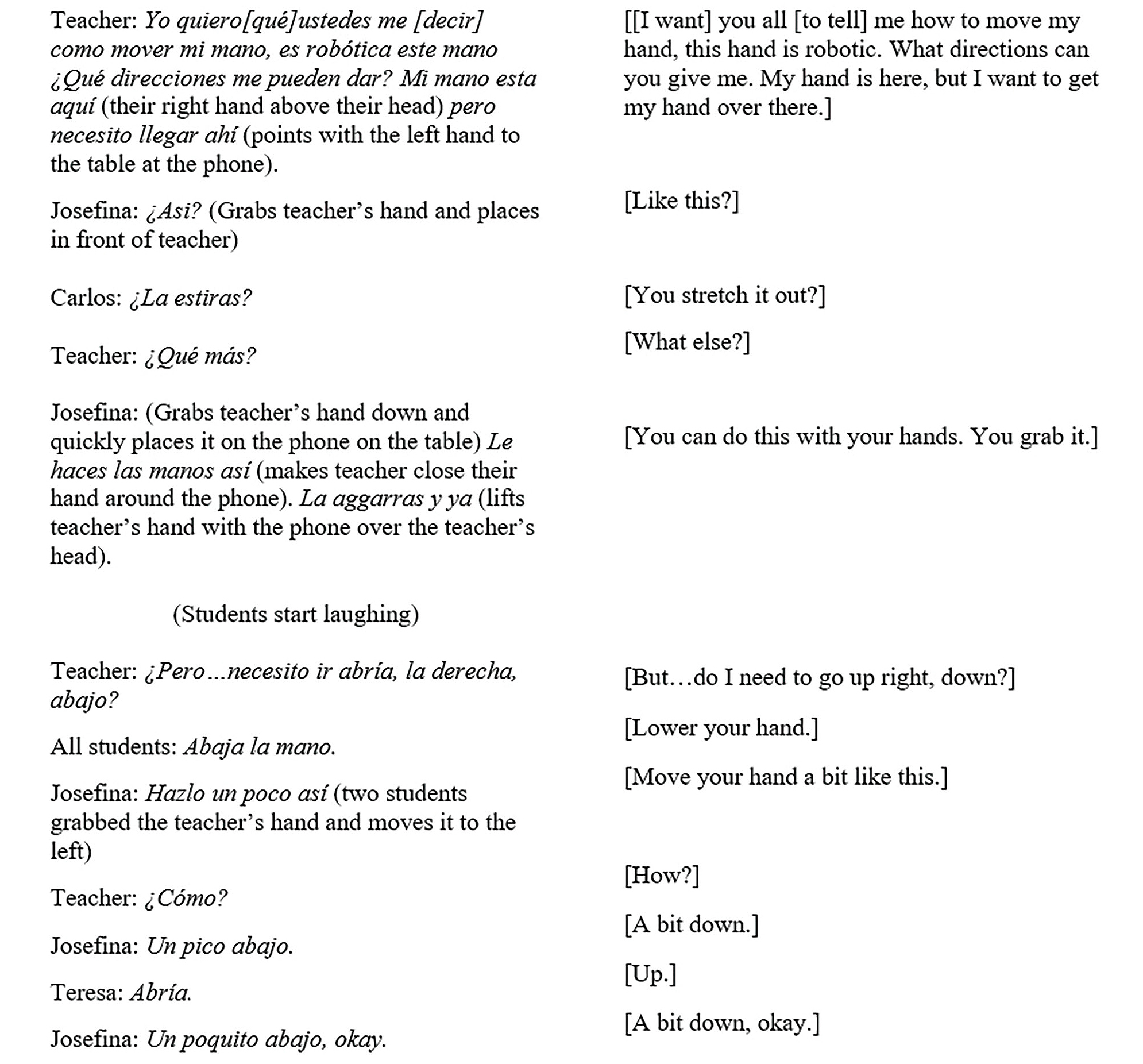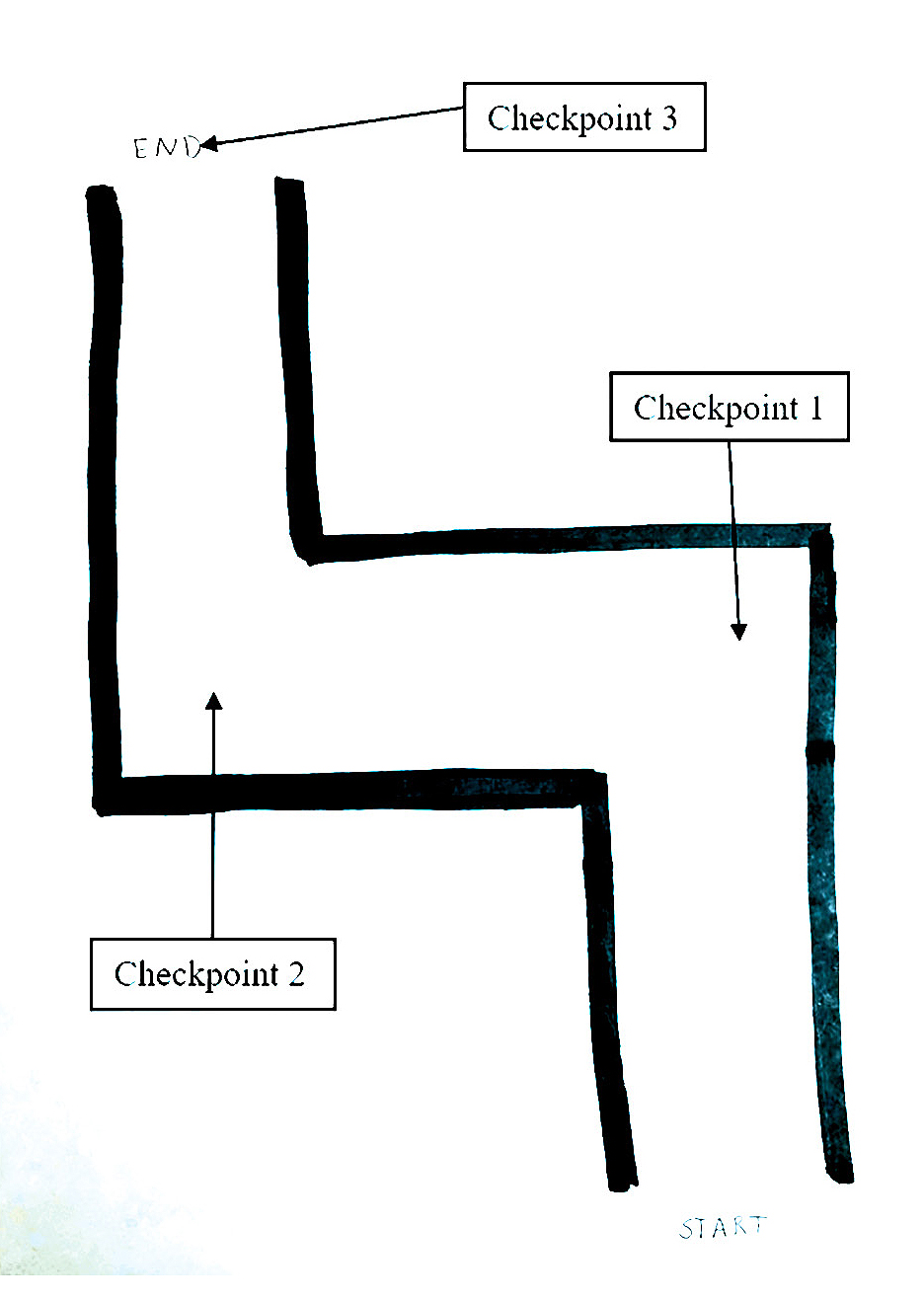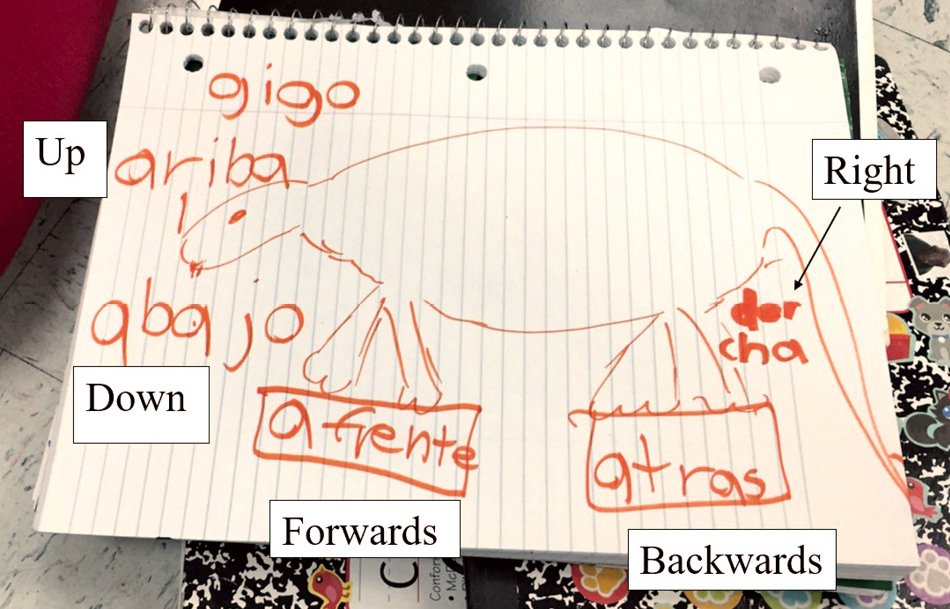feature
¿Qué es un Código?
Supporting Emerging Multilingual Learners in digital literacy
Science and Children—May/June 2021 (Volume 58, Issue 5)
By Ellen Barnett, Karina Méndez Pérez, and Rocío Delgado

The United States is home to a culturally and linguistically diverse population of young children. In 2017, 10% of U.S. learners came from homes where languages other than English are spoken. The southern state where this study was conducted reports 18% English learners in its student population (NCES 2019). English learners’ language development is often viewed as a deficit to be overcome, but our perspective aligns with a contemporary strengths-based philosophy. Students who are learning English in addition to their native language(s) have the opportunity to become bilingual or multilingual in school. Thus, rather than referring to them as English learners, we refer to them as Emerging Multilingual Learners (EMLs) throughout this paper.
As we seek, design, and implement equitable science, technology, engineering, and mathematics (STEM) instruction, we recognize both the linguistic demands inherent in standards as well as the deep funds of knowledge—academic and cultural content knowledge—that EMLs bring to the learning context (González, Moll, and Amanti 2005). In this article, we share a lesson that engages young EMLs in coding. As students explore codes and robotic actions, instruct a robot to complete tasks, and define problems that might be solved through digital tools, they achieve STEM standards, develop academic language in context, and construct meaning built on their knowledge and experiences with technology, innovation, and digital engagement.
The Next Generation Science Standards (NGSS) (NGSS Lead States 2013) call for all learners to be actively engaged in three-dimensional (3D) science learning consisting of disciplinary core ideas (DCIs), crosscutting concepts (CCCs), and science and engineering practices (SEPs). The connections between engineering and technology found in A Framework for K–12 Science Education and NGSS demonstrate the importance of providing students opportunities to engage with digital tools, construct understandings of how digital tools and digital communication are used in science, and apply technological and engineering practices to solve practical problems. Similar goals are expressed in Common Core State Standards (CCSS) and 21st Century Digital Literacy Skills recommendations. CCSS calls for learners to comprehend and critique evidence and use mathematical reasoning to solve problems. Digital Literacy calls for creative, innovative learners who can synthesize and interpret information to solve problems and communicate clearly using multiple media and technologies. The development of language is inherent to engagement in science and engineering practices (Lee, Quinn, and Valdés 2013) and across various digital platforms used to obtain information, create content, and innovate. In our digital world, where academic and social communication often occurs via digital interface, the connections between NGSS, CCSS, and 21st Century Digital Literacy Skills provide a foundation and guidance for supporting children’s STEM learning, language development, and digital literacy. Synergistic STEM instruction that engages EMLs in disciplinary practices and is integrated with cultural and linguistic supports fosters STEM understanding, language development, and digital literacy (Lee and Stephens 2020).
In collaboration with a first-grade teacher, we participated in the planning of a project-based learning unit on innovation. The unit was developed and implemented in a first-grade dual (English/Spanish) classroom with 13 EMLs whose primary language was Spanish. In the Inventores [Inventors] unit, students explored diverse inventors and inventions, defined problems that might be solved through innovation and engineering design, and proposed solutions for making play on their school playground safe, fun, and user-friendly. Students collected information about diverse inventors and their inventions, including porque [why] the invention was designed; this helped students understand how engineers design solutions to solve problems. Some lessons within the unit explored the use of tools, including digital tools like digital maps, interactive features, and robotics that students might find useful in proposing solutions. Here, we share the lesson on robotics and coding and the embedded cultural and linguistic supports that fostered EMLs’ digital literacy.
The lesson is written as a 5E lesson cycle (Bybee et al. 2006). The one-hour lesson afforded students the opportunity to explore a new digital tool, a robot. Students worked in small groups of three or four to code the robot to perform various actions and move along a predetermined path. Working in small groups fostered productive discussion and interactions between teachers, learners, and tools, using language as meaning making, a contemporary instructional strategy advocated in the 2018 report, English Learners in STEM Subjects: Transforming Classrooms, Schools, and Lives (National Academies of Science, Engineering, and Medicine [NASEM] 2018). Small instructional groups afforded us opportunities to listen and respond to young learners and to support them as they learned to use a new digital tool. To capture students’ sense-making and to honor their voices, quotes are included in Spanish with a side-by-side English translation.
Engage (10 minutes)
In this phase, we elicited students’ prior knowledge by inviting them to share their experiences with coding. The question posed was “¿Qué es un código?” or “What is coding?”
Some students had used coding platforms like Scratch and Codecademy; others had limited or no experience. We encouraged students to share their personal experiences and created a space where students’ ideas were valued and accepted in Spanish or English. Recognizing and leveraging EMLs’ cultures, social classes, and linguistic backgrounds as well as their experiences allows teachers to view EMLs’ knowledge and skills as a resource and not a deficit in STEM learning (NASEM 2018). Through students’ sharing, their preconceptions of coding as a telephone number, password, message, robot, and video game were identified.
After informally assessing students’ understanding of coding, the teacher asked students to pretend that one of her arms was robotic. She asked “How could we tell the robotic arm to pick up a phone?” Students were asked to use directional terms (e.g., up, down, right, left, forward, and backward) to “code” the arm. The vocabulary was written on a large poster in Spanish and English next to pictorial representations (see Figure 1).

Unit vocabulary.
Figure 2 provides a synthesized example of students’ efforts to code the robotic arm. Students’ collaborative work on the robotic arm created a shared experience that facilitated their understanding of coding, connected their learning to prior experiences, and prepared them for further exploration while developing academic language in context.

A students’ efforts to code the robotic arm.
Explore (20 to 30 minutes)
During the Explore phase, the teacher introduces materials and facilitates students’ investigation. Students observe patterns, question events, and ultimately use these observations and evidence to construct explanations and solve problems. In this lesson, students explored a new digital tool and platform. We introduced a robot that can identify lines, colors, and codes on digital surfaces or paper. We used Ozobots in this lesson, but teachers can substitute other products (e.g., LEGO Mindstorm, Microduino Itty Bitty Buggy). We encourage teachers to explore new technologies with students and to reach out to colleagues and community partners for resources and professional development.
Teachers demonstrated how to input a code by introducing a free platform (Ozoblockly) used to code the robot (Ozobot and Evollve, Inc. 2017). The platform has varying levels of coding that allow students to program their robot in simple or nuanced ways. Students were given time to upload different codes and observe the robot’s subsequent action(s). We found that the young learners needed support with the robot and coding platform. For example, the fine motor skills required to push small buttons may necessitate assistance. As they explore, students discover what the robot can do (e.g., turning, moving in different directions and speeds, and producing lights and sounds). Students then programmed the robot to perform actions in a sequence to solve a problem.
We asked students to code the robot to move through a predetermined path with three checkpoints. We shared a physical copy of the path with each student (see Figure 3) or pair of students so they could test their codes. Our recommendation to pose questions that are interesting and challenging enough to sustain students’ interest and effort aligns with the need to differentiate instruction to meet diverse student elements of readiness, interest, learning profile, and affect (Tomlinson 2003). Problems posed should also be flexible enough to allow multiple solutions, which provides for differentiation of the product students create. Figure 4 is a synthesized example of students’ efforts to program the robot to reach the first checkpoint.

The robot’s path.

A student's efforts to program the robot to reach the first checkpoint.
Exploration is a time of STEM content and linguistic discovery. Throughout the lesson, students were encouraged to reference the chart in Figure 3 and to explain their ideas in linguistic or non-linguistic ways (e.g., drawing, body movement, or using symbols), thus providing opportunities for both conceptual understanding along with linguistic development (Dean et al. 2014). Learners use spoken and written academic English and Spanish as they engage in 3D learning and the digital task of coding.
Explain (10 minutes)
During the Explain phase, teachers and students co-construct explanations or solutions. As teachers and students review observations, they collaboratively construct explanations or design feasible solutions based on evidence (Bybee et al. 2006). We wanted students to create a code that would direct a robot to complete a predetermined path and to explain how coding can be used to design solutions. Rather than provide a direct definition of coding, students were invited to share their thinking and solution(s).
Importantly, there were multiple plausible solutions. For example, students could program the robot to take five steps forward using any number combination that summed to five (e.g., 1 + 1 + 1 + 1 + 1 or 2 + 3). In Figure 5, a student is figuring out the number of steps needed to get to checkpoint 2 using a counting-on strategy and the distance between their knuckles as an estimate of the length of one robotic step. This demonstrates how students leveraged multiple meaning-making resources (Lee and Stephens 2020) and exerted agency in the development of their code.

A student counts how many steps his robot must take to reach a checkpoint.
They also took ownership and thought of ways to extend their explanations of what coding was to how they could code a robot that would pick up toys. Students discussed how they would code their robot by using new academic vocabulary. In Figure 6, one of the students, Leticia, expressed coding as a step-by-step process, using directional terms to describe the motion of the robot. Another student believed that by simply telling the robot to clean, it would automatically pick up the toys. Although Leticia’s response demonstrates understanding of coding as a step-by-step process, both students demonstrated growth in their digital literacy skills. The path they followed to grow in their understanding and use of digital tools/digital literacy is evidence of how this lesson allowed for student engagement with the content at different levels of readiness and how the teacher used informal checks for understanding as a formative assessment tool to determine next steps (Berger, Rugen, and Woodfin 2013).

A student uses directional terms to describe the motion of the robot.
Elaborate (10 minutes)
During the Elaborate phase, teachers provide students with additional experiences to further their understanding. For example, students might apply concepts in new situations or challenge new ideas (Bybee et al.2006). We invited students to apply their learning by defining a new problem that could be solved through the use, improvement, or development of a digital tool. Some children suggested designing a robotic animal or new codes for existing robots. For example, one child suggested coding new dance moves for a dancing robot she had seen at a cousin’s quinceañera (a Latin American traditional celebration of a girl’s 15th birthday). Another student connected the new vocabulary to their recent visit to a local museum where they had seen a dinosaur replica move its head, legs, and tail (see Figure 7). Some children wanted to show their families the robots and challenge them to code the robot. Others suggested designing a different maze and working with a friend to code the robot.

A student connects new vocabulary to a past experience with dinosaurs.
Children’s ability to elaborate on their learning, apply ideas in new contexts, and express their ideas may vary. We recommend providing adequate time for students to consider and express possibilities. It is also helpful to involve other members of EMLs’ community (e.g., parents, grandparents, aunts, and uncles); students had opportunities to share their digital learning with family members.
Evaluate
The purpose of the Evaluation phase is for students to share their learning and teachers to assess their understanding (Bybee et al. 2006). Formative assessment of students’ understanding of coding and its applications occurred throughout the lesson and informed the teacher’s instruction. For example, when Martha suggested coding a robot to pick up toys using a single message, “clean,” the teacher helped her revise her solution to a series of steps similar to how she coded the robot to navigate a path. While we did not design a stand-alone summative assessment, the elaboration is a culminating opportunity for students to share their digital learning and innovation.
During formative and summative assessment, we recommend allowing EMLs to demonstrate their knowledge in less language-embedded tasks and to express themselves through linguistic and nonlinguistic modes. The affordances and limitations of multiple modalities and the ways they can be leveraged by teachers offer unique opportunities for EMLs to express learning (Grapin 2019). Digital literacy and engagement in NGSS practices and CCSS requires all students to use multiple modes of expression in a manner that is appropriate for the platform and discipline. Teachers can choose which mode(s) provide the most insight into their students’ learning.
Our assessment of students’ learning throughout the lesson provided insight into how students were making sense of digital tools and digital communication to solve problems. Assessment also highlighted students’ development of academic language during STEM engagement; importantly, this underscores that “language is a product of interaction, not a precursor or prerequisite” (NASEM 2018, p. 98).
Conclusion
This lesson engages young EMLs in 3D learning and digital innovation while building on their lived cultural and linguistic experiences. We have since taught the lesson in two monolingual, English-only first-grade classrooms and in a fifth-grade bilingual classroom. The lesson can be differentiated for students with diverse cultural and linguistic funds of knowledge and for older elementary students. Older students enjoyed working collaboratively in larger groups of five or six students to program the robot to navigate more challenging paths and imagine more complex innovations such as robots communicating with one another and working in tandem to complete a task. This highlights the potential for connecting this and other coding lessons to scientific ideas beyond the Engineering, Technology, and Applications of Science Standards in NGSS. For example, 1.PS4.C notes that “people use a variety of devices to communicate (send and receive information) over long distances” (NGSS Lead States 2013).
Consistent with recommended contemporary instructional approaches for engaging EMLs in STEM, we found that embedded supports, such as a dual language word wall with pictures, familial participation, and incorporation of students’ prior knowledge of technology help all elementary EMLs engage in NGSS practices and develop digital literacy skills. ●
Ellen Barnett (ebarnet1@trinity.edu) is an assistant professor at Trinity University in San Antonio, Texas. Karina Méndez Pérez is a doctoral student at the University of Texas at Austin. Rocío Delgado is an associate professor at Trinity University.
Computer Science Multilingual Learners Literacy Makerspace STEM Teaching Strategies Technology


